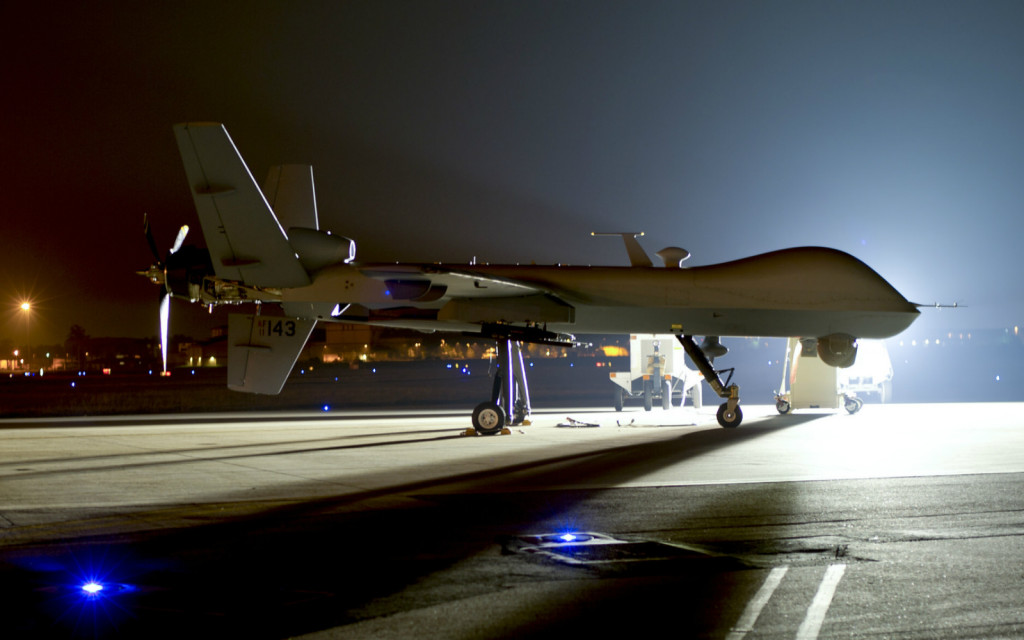We Need an Independent Review of Drone Strikes

In May 2013, President Obama announced major changes to the U.S. drone war. Though previously United States leaders described drone strikes as “surgical” and causing little to no civilian casualties, the president announced a set of criteria that the government must meet before authorizing a strike during counterterrorism operations. Under the new policy, a strike is not made unless the government has:
- Near certainty that the terrorist target is present; and
- Near certainty that non-combatants will not be injured or killed.
The U.S. government has not released data concerning these operations to validate that these criteria are being met. However, other organizations, such as the Bureau of Investigative Journalism and the New America Foundation, compile open source information to create estimates of strikes and casualties. The data suggest that while there have been improvements over time, operations still fall short of these goals.
The recent revelation of American and Italian hostages being killed in a signature strike by a drone in January 2015 renews concerns that the drone campaign is not living up to President Obama’s promises. Specifically, in that strike the exact identity of the target was unknown and persistent surveillance was unable to detect the presence of the hostages.
The use of force carries risks. But the details of this incident, combined with reporting of similar civilian casualties and missed targets from other recent operations, seem to contradict U.S. government representations of policy and operational outcomes. A deeper look at current policy and practice is warranted.
History is repeating itself. A similar situation arose in Afghanistan between 2006 and 2009. During this period, the U.S. military was causing an unacceptable number of civilian casualties. When an incident occurred, they investigated the incident, made changes to guidance, and promised to keep such an incident from happening again. But these incidents kept happening. So the military repeated this ineffective review process again and again. This “repeat” cycle was only broken when military leaders approved the Joint Civilian Casualty Study, a classified outside review requested by General Petraeus. This effort had two key differences from earlier efforts. First, it was independent, so it was able to overcome false assumptions held by operating forces that contributed to their challenges. And second, the study looked at all potential civilian casualty incidents over a period of years, not just the latest incident. This approach helped identify systemic issues with current tactics and policies as the analysis examined the forest and not just the nearest tree. This study also considered different sets of forces operating within Afghanistan and their relative propensity for causing civilian casualties.
President Obama stated there would be an investigation of the January 2015 incident so that lessons would be learned. But we’ve been on that path before, in Afghanistan, and we know where it leads: more promises followed by a repeat of similar mistakes. The administration should heed past experience and conduct an independent review that looks more holistically at the issues involved, akin to the earlier Joint Civilian Casualty Study. This would help refine policy and tactics, provide a more solid foundation for future operations, inform policy decisions such as whether the military or the CIA should be conducting operations, and help the U.S. government to better live up to its policies and principles.
Dr. Larry Lewis is a principal research scientist at CNA, the project lead and primary author for many of DOD’s Joint Lessons Learned studies, and the lead analyst and coauthor (with Dr. Sarah Sewall at Harvard University) for the Joint Civilian Casualty Study (JCCS). General Petraeus described JCCS as “the first comprehensive assessment of the problem of civilian protection.” The opinions expressed are Dr. Lewis’ alone, not necessarily those of CNA Corporation or its sponsors.

